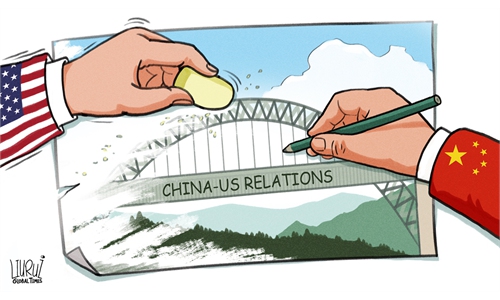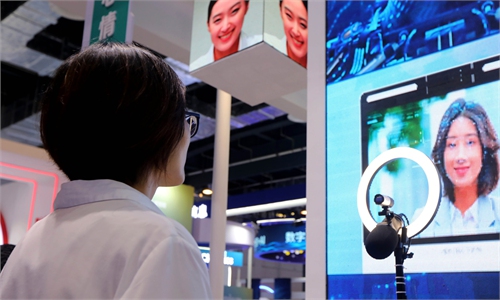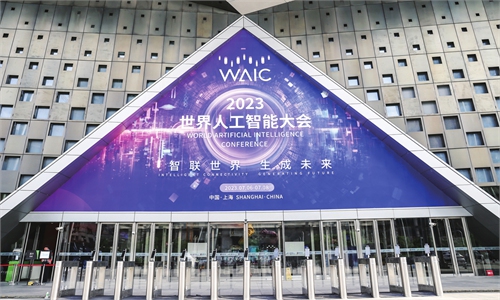
AI Photo:VCG
While China's artificial intelligence (AI) development may be facing headwinds from a US crackdown in terms of AI chip restrictions, the enthusiasm of Chinese companies for AI applications is likely to lead the country's AI development down a different path.With the theme of "Intelligent Connectivity, Generating Future," the World Artificial Intelligence Conference (WAIC) 2023 is being held in Shanghai from Thursday to Saturday, covering the four sections of core technology, intelligent terminals, application enablement and trending innovations. The sixth WAIC features more than 400 exhibitors showcasing their products in a 50,000-square-meter exhibition area, both hitting record highs in terms of the number of exhibitors and exhibition area, according to official sources.
It is true that there is still a gap between China's basic algorithms and the world's top level. This may be because China's AI industry is based on the internet industry, which is characterized with huge market data and various commercial application scenarios. These advantages may also determine that China doesn't necessarily follow the US path of AI development and play catch-up in specific sphere as if it's the only way. The key for China's AI development is to integrate its market and application advantages with Chinese manufacturing.
The industrial conference comes at a time when the US is reportedly preparing to step up the curbs on China's AI computing power. For instance, a report from The Wall Street Journal said this week that the Biden administration is preparing to restrict Chinese companies' access to US cloud-computing services. Last week, the US is reportedly considering new restrictions on exports of AI chips to China.
There is no denying that as AI development has become a key competitive field as AI technology is bound to point to more diverse application scenarios and possibilities based on the current trend. This may explain why some Western public opinion likes to play up the topic that China and the US are racing for AI dominance.
It should be noted that the US does lead the industrial development in terms of AI algorithms and computing, and is sparing no efforts to maintain its advantages to stay ahead. Some of its measures aimed at suppressing China have posed challenges for China's AI development and cooperation with the outside world.
Yet, from what the WAIC has showcased, Chinese companies' enthusiasm for AI development hasn't been dampened at all. The fact that more than 30 new AI products make their debut at the conference is enough to reflect their still strong confidence in the area and their commitment to continuous innovation. If anything, it should be pointed out that products brought by exhibitors at the WAIC about AI applications such as large models, chips, robotics, intelligent driving and other fields reflect the innovation and competitiveness of Chinese companies.
For instance, China's leading food delivery platform Meituan unveiled its latest generation of delivery drones at the WAIC, which are multi-rotor models designed for urban environments.
Shanghai Westwell Technology Co showcases the first intelligent battery-swapping autonomous commercial vehicle, Q-Truck, which has the intelligent energy service PowerOnair that can complete the power charging during a 5-minute unmanned process and can be used in port, airport, manufacturer and other logistics scenarios.
AI application products like Q-Truck may represent a major direction of AI development in China. After all, application also matters to AI industry. As long as China can drive its AI development through innovative application, it will make its own AI development path.



